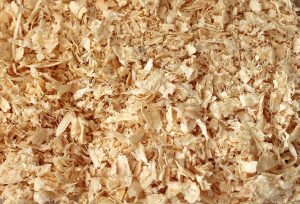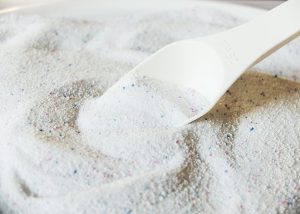
How to Get Oil Off Block Paving Driveway
- Driveways
- block paving, cleaning, driveway, driveways, home maintance, landscaping, oil, paving
- December 16, 2021
Many places around the world have implemented block paving. After all, it makes for a strong covering for both civilian and commercial-related projects. But like many similar surfaces, block paving driveways accumulate unpleasing marks after some time. These will ruin a smooth and satisfying driveway, changing the driving experience for many.
Oil is a stubborn liquid and often the culprit for most driveway blemishes. However, motor oil seeps into the gaps of bricks and slabs due to frequent spills. These leave marks that are quite difficult to take care of. Read on to learn how to get oil off block paving driveway.
Prevention
Contents
While spills cannot be completely avoided, steps may be taken to reduce the number of marks left on the driveway. Pay close attention to your car to check if oil leaks from underneath. It will not hurt to place some cardboard to reduce stains.
Use Some Sawdust

Photo Credit – PXfuel
As funny as it sounds, sawdust may help you with your oil problem. It helps lessen oil by absorbing some, which will make the cleanup process a lot easier. If you do not have any sawdust, some cat litter or a sweeping compound can help. Make sure to clean up the mess afterward to return your driveway to its best state.
Get Some Water
While this may seem like stating the obvious, cleaning the affected area with some water will help remove the oil that seeped onto the driveway. Rinsing allows your other cleaning materials to fully discard any residue left in the area. If you are unsure of using a bucket, try using a garden hose.
If you have access to a higher-powered hose, it might help things run faster on your end. You can also combine hot water with a detergent scrub. Start by heating water and mixing it with the detergent. Pour down the mixture onto the affected area, scrubbing away the stains throughout the process.
Use a hose to continue the momentum of the water. Repeat these steps until you can no longer see stains or as deemed necessary. Oil stains can be nasty, so some patience is needed! Do not forget to wear protective equipment, or at least some goggles and gloves.
Employ the Help of Soda

Photo Credit – PXfuel
Your favorite soda has uses outside the kitchen, and the driveway is one place to use its help. Grab a bottle of your favorite carbonated soft drink and pour some on the stained area. Leave it alone for a day or so before washing away the mixture with a garden hose or a bucket of warm water. The water will help rinse the area.
Detergent May Be the Way to Go.

Photo Credit – PXfuel
You probably have some laundry detergent lying around the house. If other chemicals like soft drinks or even good old water have not worked, then it might be time to use another tried and tested chemical. Try out a baking soda or vinegar solution at first.
If this does not work, then bring out the laundry detergent. Apply the detergent onto the site of the oil spill on the pavement. Wait for at least thirty minutes, then sprinkle a small amount of powdered detergent if the stain is still visible. Add about a quarter cup of hot water to make a solution.
After that, thoroughly scrub the spill with a strong, thick brush. Do not do anything else until the day after. If the stain remains visible, repeat the process until you are satisfied.
Get Some Heavy-Hitting Chemicals
There will be some cases where everyday household items will not be enough to rid yourself of the problem. These instances call for more drastic solutions, such as an engine cleaning fluid. Remember that such substances are toxic and dangerous due to their flammability. Be sure to apply them in a small portion of the driveway first to prevent excessive damage.
You can also create what is called a poultice mixture. This combination is usually effective for smaller stains or oil spills that have just happened. This reaction is that the poultice absorbs the oil, especially on concrete surfaces.
There are conditions to check for before a poultice mixture can be applied. First, ensure that a seal does not coat the driveway. Otherwise, the poultice mixture might destroy it. Then, mix an absorbent substance like sawdust or baking soda with acetone. If acetone is not available, xylene will also do. Mix these ingredients thoroughly.
The result should be a thick paste that can be applied to surfaces. Together, the ingredients should remove any recent oil stains. Put some over the stain, at around a quarter of an inch thick. Then, cover the area with an adhesive to keep it in place. Stepping on it with your foot will also help get the mixture onto other areas.
Check back after a day. After twenty-four hours or more, the mixture can be removed from the affected area. Gently peel off the adhesive and scrape away the mixture with a sweeper. Remove it and dispose of it properly. Finally, wash the area with some water (a bucket will do, but a heavy-powered hose will help lessen the waiting time).
Remember to notify other household members of the chemicals as they can have unpleasant odors.
Use Microbial Cleansers from the Store
Microbial cleansers are available in most household stores. They are usually made from biodegradable material, are less harsh on the nose, and are even more eco-friendly. Check with your local hardware store if they have some available. A gallon should last you multiple clean-ups.
They are effective against oil spills due to the microorganisms in the solution. They do these without causing any toxic chemical reactions. Ensure to check for a seal of approval from authorities and validate the product with the store before purchasing.
Some stains can just be plain stubborn. These might be a bit hopeless, and you will probably spend more trying to remove them than just replacing the area altogether. So you can ask for help from an expert on construction or look up the process of block paving yourself.
The important thing is to remain safe and cautious as you do these solutions. Now that you have the knowledge of removing unsightly oil stains from your block paving driveway why not jump into some of our other articles including 15 Reasons New Tarmac Drive Can Still Be Soft Even After Installation and The Best Driveway Materials for Sloped Driveway!





